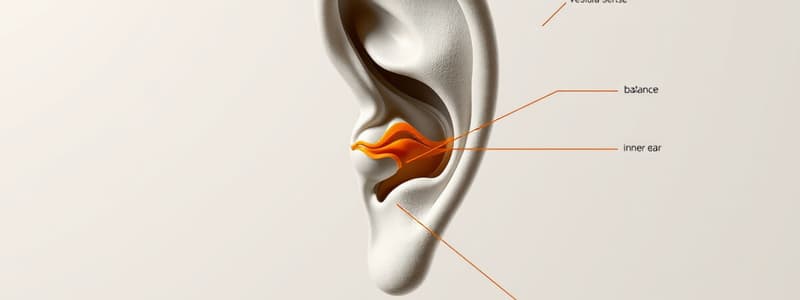Podcast
Questions and Answers
What is the vestibular sense?
What is the vestibular sense?
- The sense of taste
- The sense of sight
- The sense of body movement and position, including sense of balance (correct)
- The sense of hearing
Which two parts of the inner ear are involved in the vestibular sense?
Which two parts of the inner ear are involved in the vestibular sense?
Semicircular canals and vestibular sacs
Explain the vestibular sense.
Explain the vestibular sense.
There are substances inside the inner ear that move when the head tilts or rotates. This movement stimulates hairlike receptors in these organs of the inner ear. The receptors then send messages to the cerebellum at the back of the brain.
Flashcards are hidden until you start studying
Study Notes
Vestibular Sense Overview
- Refers to the sense of body movement and position, crucial for maintaining balance.
- Provides awareness of spatial orientation, allowing the body to understand its position relative to the environment.
Components of the Vestibular System
- The semicircular canals and vestibular sacs are vital structures within the inner ear for the vestibular sense.
- Semicircular canals detect rotational movements and changes in head position.
- Vestibular sacs respond to linear accelerations and the effects of gravity.
Mechanism of the Vestibular Sense
- Movement of the head causes fluid within the inner ear to shift, triggering hairlike receptors.
- These hair receptors convert physical motion into electrical signals, transmitting information to the cerebellum.
- The cerebellum processes sensory information to coordinate balance and movement, ensuring stability and posture.
Studying That Suits You
Use AI to generate personalized quizzes and flashcards to suit your learning preferences.




